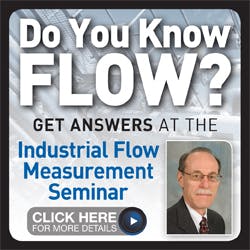Over the past couple of months, I was irked that the extractor feed pump operated at full speed with its flow being throttled by a control valve located in plain sight approximately 1 meter above the pump discharge. It seemed straightforward to me that it would be much more efficient to reduce the pump speed so that the pump output could match its load, thereby eliminating not only the dissipation of hydraulic energy across the control valve, but eliminating the control valve entirely.
Having successfully demonstrated that the energy savings could be accurately predicted, I was ready to apply variable-speed drive technology to the extractor feed pump. Energy consumption was calculated for full-speed operation and then for reduced-speed operation. Energy savings on the order of 15 percent were not sufficient to justify the project that included the purchase of the variable-speed drive, modification of a motor control center, and control wiring modifications to accommodate the proposed variable-speed drive.
Notwithstanding the inability to justify this project, this exercise made it clear that in new installations, aside from being more energy-efficient, the installed cost of variable-speed drive control is less expensive than the cost of installing control valves and bypasses in sizes up to a few inches. In larger applications, the cost of a variable-speed drive can be far higher than that of a control valve installation. However, the energy savings associated with large equipment can be much larger and handily justify a well-conceived variable-speed drive project.
It may have taken years, but the extractor feed pump (and other pumps in the unit) could finally operate with their control valves wide open.
David W. Spitzer is a regular contributor to Flow Control with more than 35 years of experience in specifying, building, installing, startup, troubleshooting and teaching process control instrumentation. Mr. Spitzer has written over 10 books and 150 technical articles about instrumentation and process control, including the popular “Consumer Guide” series that compares flowmeters by supplier. Mr. Spitzer is a principal in Spitzer and Boyes LLC, offering engineering, expert witness, development, marketing, and distribution consulting for manufacturing and automation companies. He can be reached at 845 623-1830.
NOTE: David W. Spitzer’s Variable Speed Drives: Principles and Applications for Energy Cost Savings is available for purchase through ISA at isa.org.




